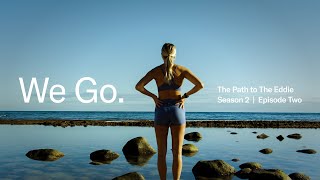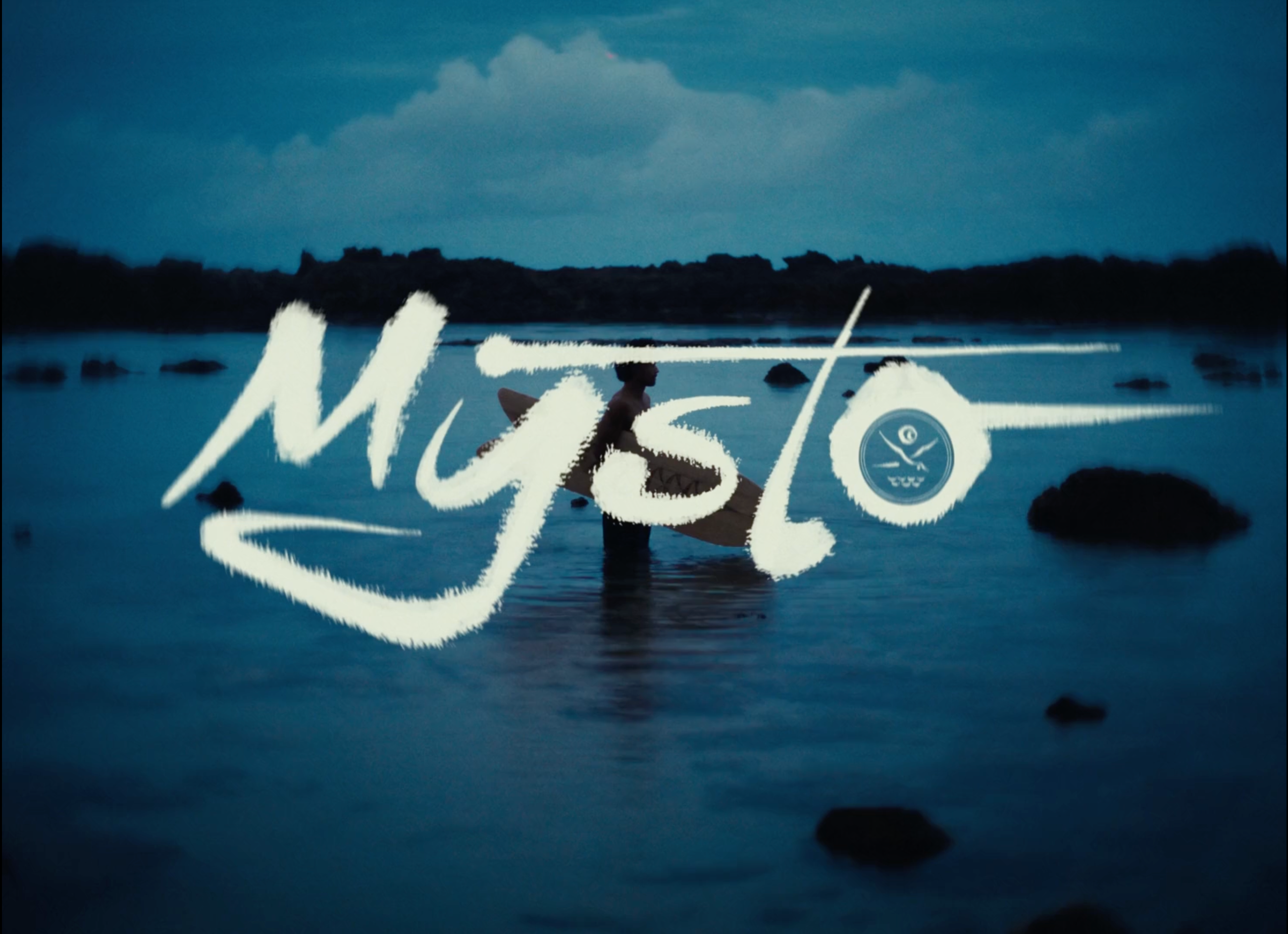Hōkūleʻa Lands in South Florida, March 2016
A familiar sound extends across the sea, landward, to the ears of people walking the beaches last month in South Florida. The sound brings deep feelings of beginnings, of celebration. Standing on the deck of the Hōkūleʻa, a crewmember blows into a pū—the Hawaiian name for conch shell—trumpeting their arrival.
The Hōkūleʻa is on a Worldwide Voyage, sharing the principles of Mālama Honua—"caring for our Island Earth." She departed Hawaiʻi in May of 2014. The voyage, weaving a "Lei of Hope" around the world, has encompassed 12 countries and over 55 ports to-date. Nainoa Thompson, president of the Polynesian Voyaging Society, said this voyage presents an opportunity to share stories and indigenous knowledge with people around the world who are engaged in sustainable practices.
Story and meaning are important in Hawaiian culture. Hōkūleʻa means "Star of Gladness," fitting for the message and journeys this magnificent double-hulled voyaging canoe has undertaken since its birth in 1975. How her name was bestowed is its own story. History notes that a dream, carrying the new name for a canoe, would come to a canoe's designer. Herb Kawainui Kāne was that designer, and the dreamer. Arcturus—known in the islands as Hōkūleʻa—was the star in his dream. It was fitting this would be her name, for when the star Hōkūleʻa is at its zenith, it is overhead to those who live in the Hawaiian Islands, pointing the way home.
As the Hōkūleʻa departed Cuba and Southern Florida in recent weeks, she wound her way through the middle of Florida via the Okeechobee Waterway, a nearly mid-state channel allowing boat travel between the west and east coasts of Florida. Her travels now take her up the Atlantic coast to New York, with stops along the way where OluKai is hosting crewmember talks. (These journeys have been promoted and sponsored by many groups, including the Polynesian Voyaging Society, the Ama OluKai Foundation, and Hawaiian Airlines.)
Along the way on this journey, a sweet reflection of a parallel Aloha message is captured in a mural painted to embody the spirit of the Hōkūleʻa's mission. The mural—painted and displayed in Miami—is the result of OluKai's Anywhere Aloha campaign. OluKai has sent Hawaiians to different parts of the world to work with like-minded people on spreading the aloha spirit and documenting the experiences. This mural was painted on a "Little Haiti" wall by local artist Tati Suarez and Hawaiian artist Kamea Hadar.
One of the crewmembers, Austin Kino, took time to talk story with us about the journey.
Olukai: How is your trip received by the locals where you land?
Austin Kino: So far—since the Worldwide Voyage has left Polynesia where most of the people we were visiting identify with Hōkūle'a on a cultural level—we were all curious to see what kind of reception we would attract once we left New Zealand and ended our Polynesia legs of the voyage. Overall, our voyage around the world, tag lined "Mālama Honua," has been met with an enormous amount of support and following. Throughout our time in the British Virgin Islands, we were hosted on Moskito Island by Sir Richard Branson and the Ocean Elders who have supported our voyage since its inception and see Hōkūle'a as the vehicle that will convene massive change within the realm of ocean conservation and stewardship. The ocean elders, who include powerful figures like Dr. Sylvia Earle and Jackson Browne, are helping to venerate our voyage throughout their channels and will be standing by our side as we present to the United Nations on World Oceans Day this coming June 8th.
During Hōkūle'aʻs visit to Cuba, we were hosted as family by the Cuban people, who identified with us as being island people who are mindful of their limited resources and strong cultural pride. The learning and sharing that has taken place has strengthened both our contingent from Hawaiʻi and the local people of Cuba who also identify themselves as originating from a canoe culture.
As we made our first contacts in Florida, the first people we had contact with were the indigenous people of the Seminole Tribe. Having never before heard much about Hōkūle'a or our mission to care for island earth, it was only a short amount of time before they identified with us as first nations peoples and fellow brothers and sisters who are not separated by the oceans but instead connected by them.
One of the biggest things the people connect with about the Hōkūle'a is a sense of cultural identity. Initially, this was mostly in the Pacific, places of Polynesian descent. The coastal connection was always there. Now, leaving Polynesia, in the variety of groups and ways we are received we see where we all can find significant contributions to the health of the planet.
OluKai: How do you feel about this journey? Has it changed you?
Austin: Every time I set foot on this canoe, I am in a state of awareness. The thing I love most about voyaging is that you are at the whim of the elements and from day to day your decisions, actions, and emotions are all directly linked to the ever-changing conditions around you. For me this sensation brings me great peace, that I can be sailing along using nothing but the energy from the wind, staring up at the same stars above me that my ancestors have looked up at before me allows me to feel connected and to truly live life in the present. I am a changed person every time I step back on to the land, most of the time with a greater sense of self-awareness and an increase in my own confidence to handle various situations and conditions.
OluKai: What is the camaraderie like amid the crew?
Austin: We have always been taught that our voyaging canoe Hōkūle'a is our mother, and our navigator is our father, which instills the set of values that our crew is one family and we treat one another accordingly. Living in such a confined space with limited resources and exposed to natures harsh conditions it is only natural that there will be obstacles and challenges, but it is through this family mindset that we stick together as we are each eager to be explorers and learn what we can about the new lands and cultures that we are voyaging to.
OluKai: Can you describe how you navigate?
Austin: Essentially, we start by learning the star compass—make a circle of rocks in the sand, and all those places [stars, sun, moon, e.g.] would identify different houses. In Polynesian way-finding, you're always at the center of your compass. Stars, sun, waves, travel across the compass. The outer circle is the horizon. Nainoa took the star compass design and put it over a western compass and divided the 360 degrees into 32 star houses, each 11 1/4 degrees. We memorized these star houses, e.g. what house the sun is in at a certain time and place. We learn as many of the stars as we can. We get an orientation, a bearing. If nothing else, we always have the waves. We can steer off the waves—e.g., in the Pacific between Hawai'i and the Mainland, most of the waves come from the Northeast. We map it out on a traditional western map and divide the trip into legs and bearings, and memorize that map. We can use our hands as sextants to measure degrees off the horizon —angle to the North Star, for example. We are not always going to [initially] hit an island exactly in a chain, so we use birds a day out. Some birds don't sleep on the ocean and are only so far away from land. Sometimes we can smell an island, see debris. We can see reflection in the clouds over an island, the change in colors.
OluKai: What prompted you to be a Hōkūleʻa crew member?
Austin: In high school, Nainoa Thompson was a family friend. So I grew up knowing him and paddling. We started doing small sail trips. During a two-year dry dock, I spent time down there.
OluKai: Crew members?
Austin: The crew pool is about 300 [the crew at any one time can vary—approximately 12-15 members). It's random, depending on your age, your skill set. We trade off. The intent is to not have any crew member be away from home more than a month.
OluKai: What role, or roles, do you play?
Austin: I'm an apprentice navigator—and doing everything from fisherman to rescue drills.
OluKai: What can you tell us about the mural in Miami, painted for the Hōkūleʻa's arrival?
Austin: It is a painting of the goddess Hina , the moon goddess who lived in the moon. She and her brother Ru were the first voyagers in our voyaging traditions, and it is said that she looks over the voyagers today to keep us safe.
OluKai: Can you speak to OluKai's presence in this journey?
Austin: OluKai has supported our voyage since the beginning. The Ama OluKai Foundation has supported the Polynesian Voyaging Society as one of our sponsors. In addition, some of our leadership and crew have had the opportunity to become OluKai ambassadors. OluKai will be hosting a series of crew member talks at various events as we make our way up the East Coast, which is really significant because every time we are able to share about our voyages to a new audience we gain more attention that is very valuable to our mission. We recognize as a voyaging society that OluKai has a large network of followers who love the Hawaiian culture and want to learn more about it. We are honored to have their support throughout this Worldwide Voyage.
---
The Hōkūleʻa is expected to return to Hawai'i in 2017.



















